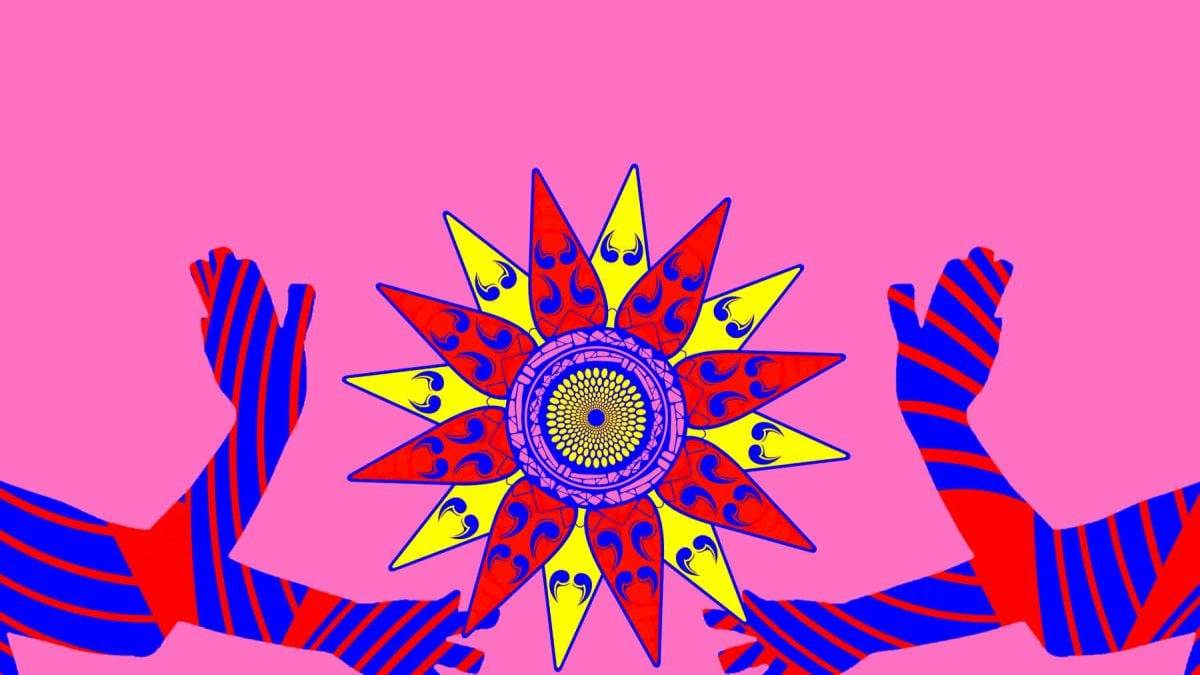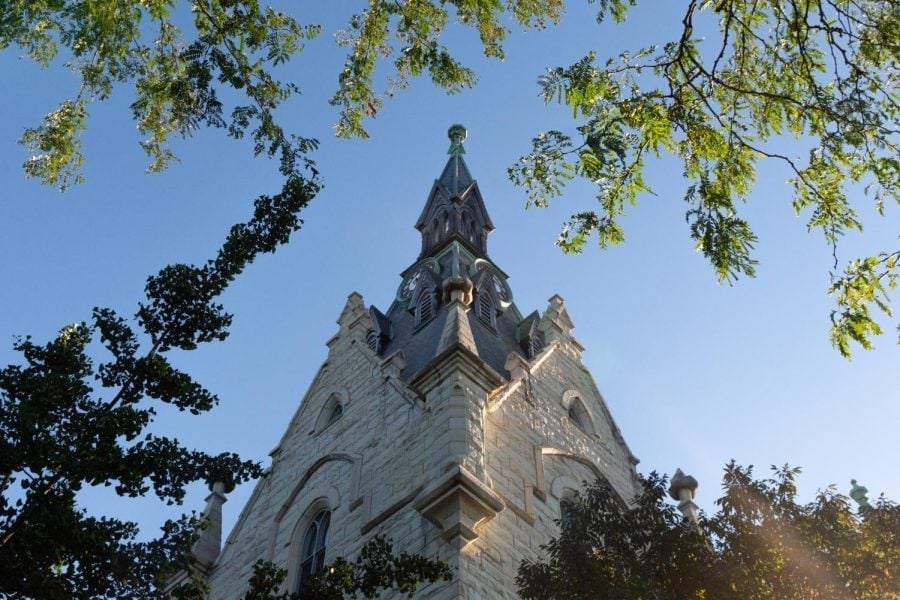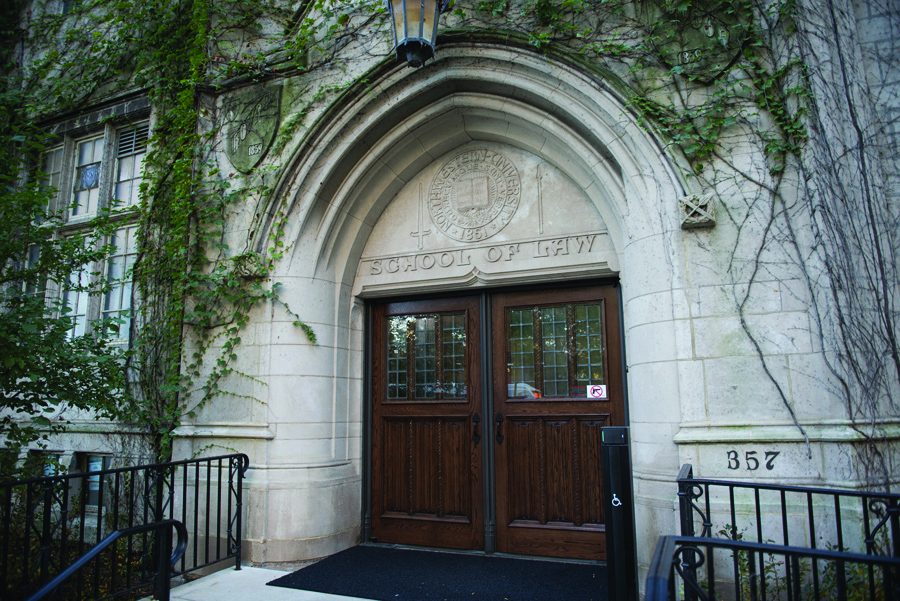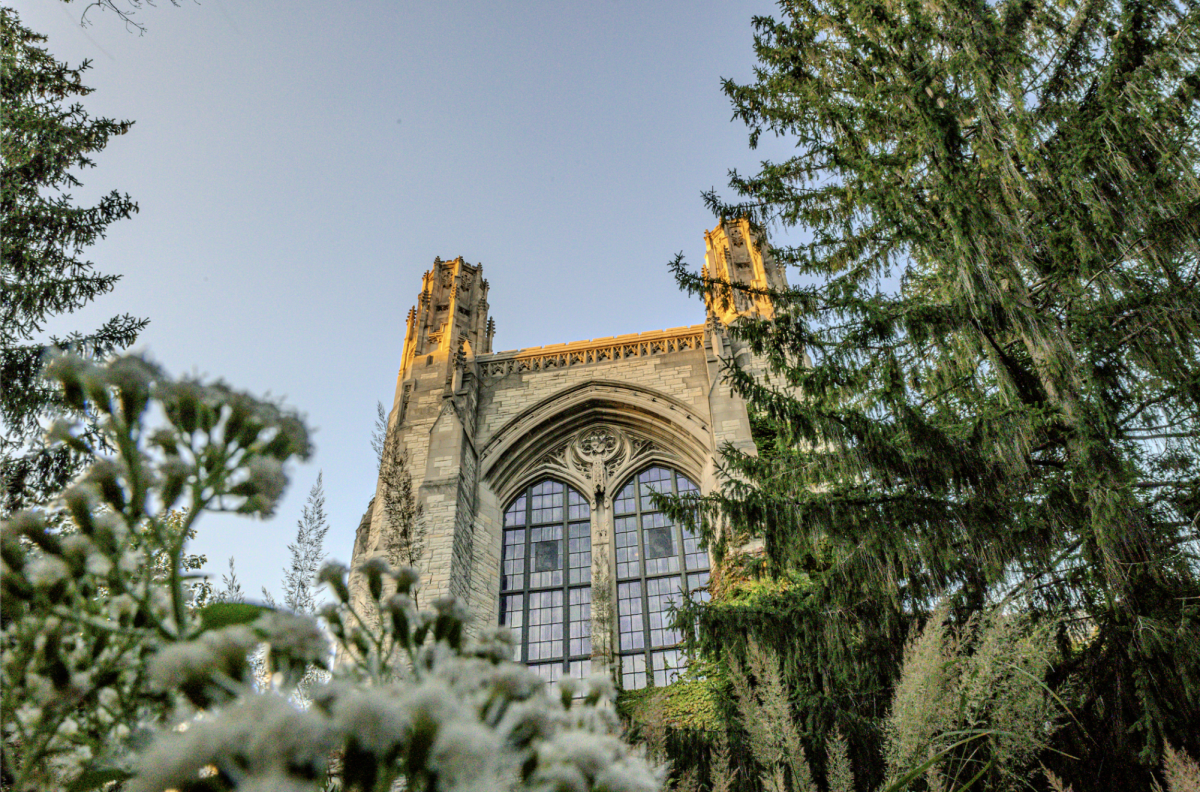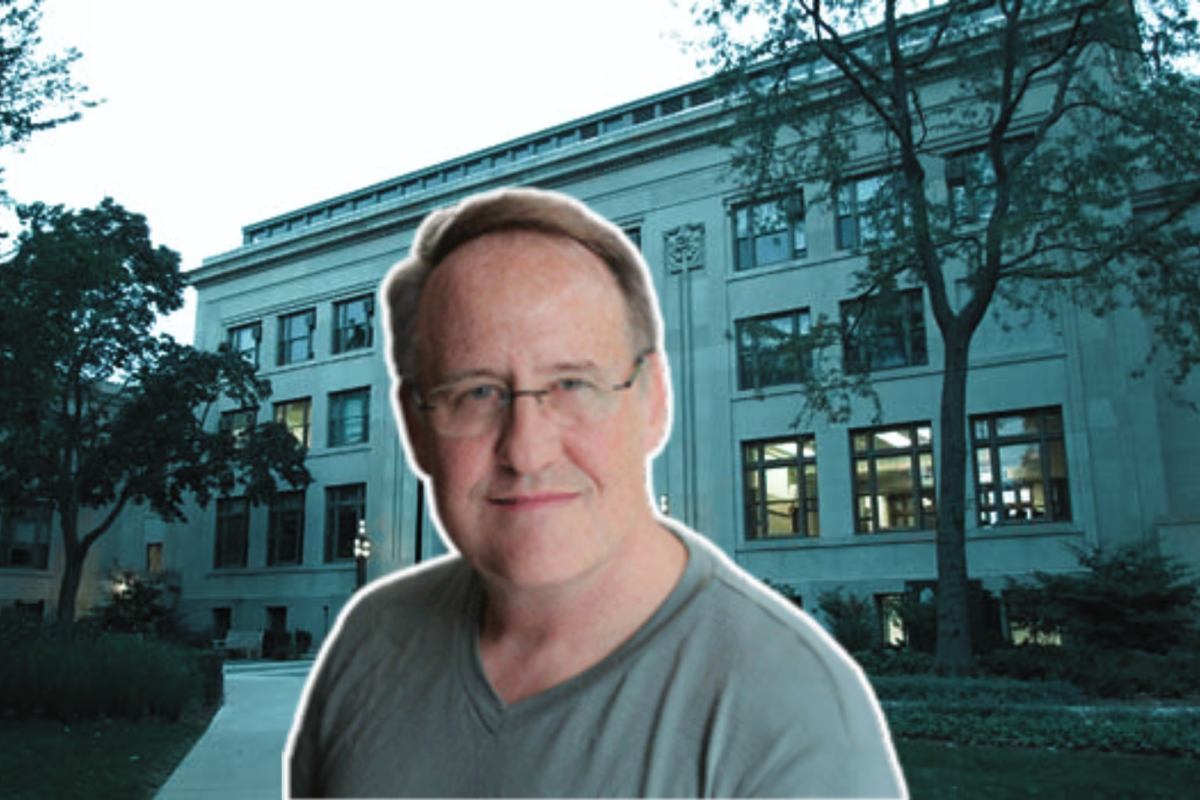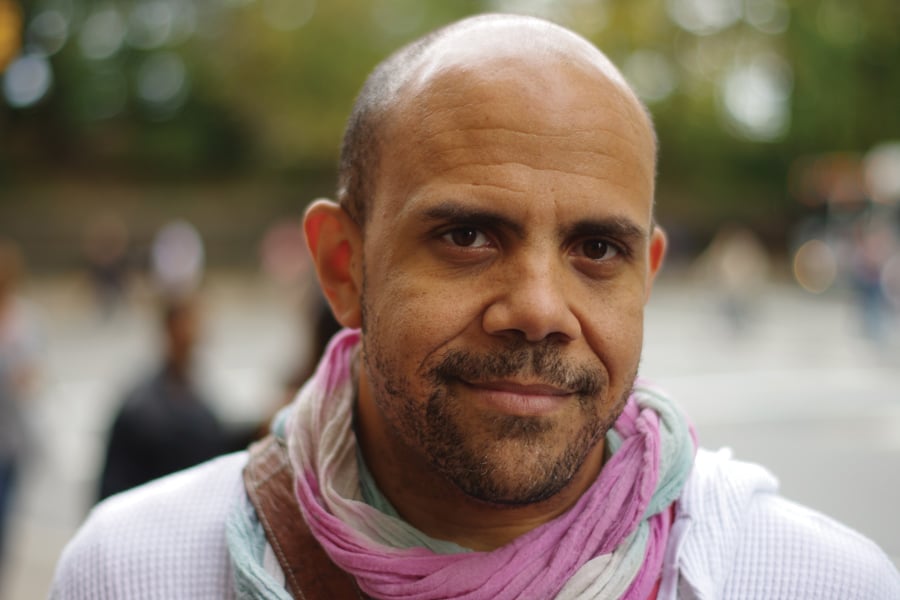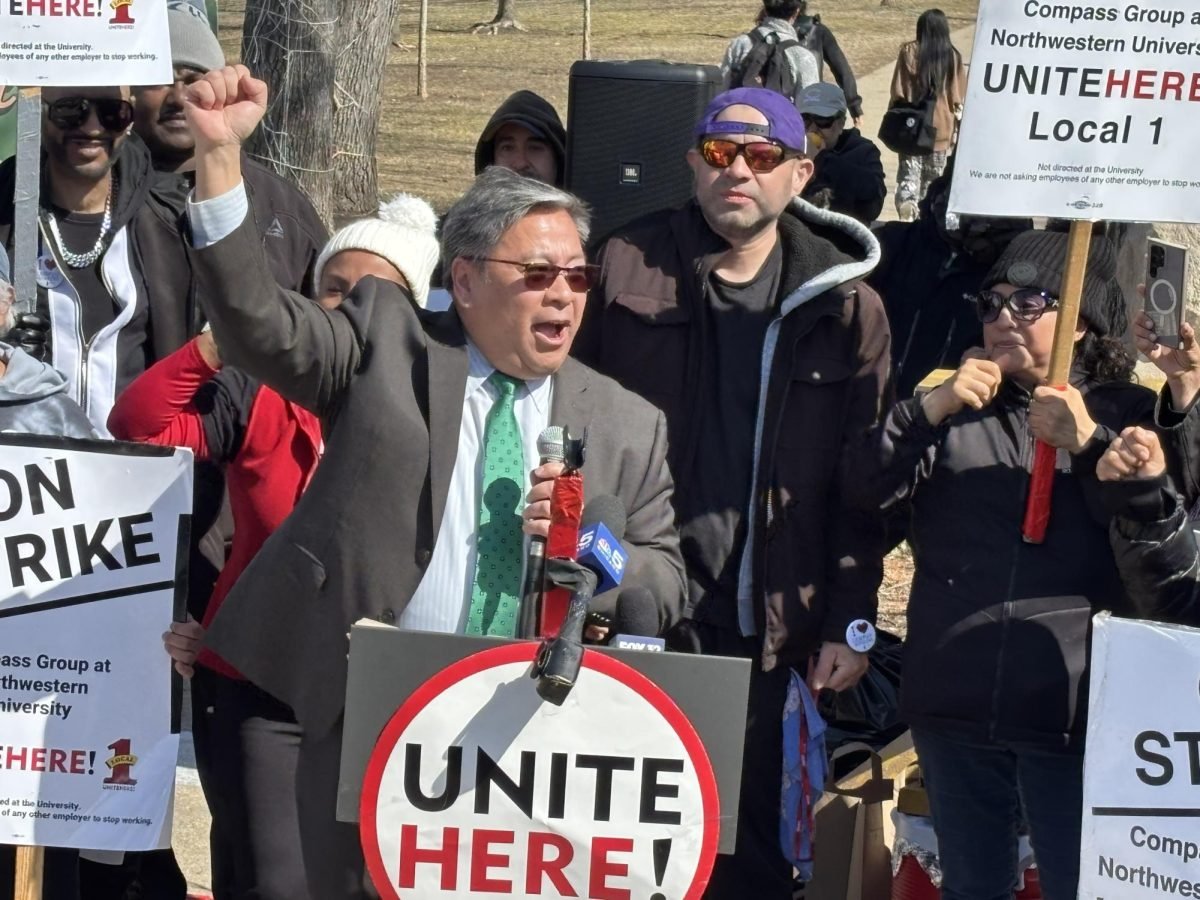Originally born in Nairobi, Kenya, before migrating to Toronto, Canada, and the United States, Art Theory and Practice Associate Professor Brendan Fernandes’ talents cross borders and oceans.
As a fifth-generation Kenyan Indian and queer-identifying artist, Fernandes said they aim to push boundaries on what modern dance can encompass. Whether it’s putting on a dance installation to commemorate the 49 lives lost in the queer-targeted 2016 Pulse Massacre or orchestrating a five-hour-long still-motion piece at the Whitney Biennial to critique norms of authority, Fernandes’ work challenges convention and advocates for multidisciplinarity.
The Daily sat down with Fernandes to talk about his career.
This interview has been lightly edited for brevity and clarity.
The Daily: Your work is known for intersecting dance, visual arts, social commentary and so much more. Could you tell me a little bit about the genesis of your work? Why is it important to marry social commentary with choreography?
Brendan Fernandes: I always think about dance as a political space. I come from a ballet and modern dance background, but sculpture, visual arts, the kind of mixing of architecture — all these sorts of spaces have always been part of what I’ve done. Being a fifth-generation Kenyan Indian who then immigrated to Canada, I kind of see hybridity as something that’s always been a part of my identity and my ethos. As a queer-identifying person, I also think about the spaces of the non-binary, spaces that are in between, that are kind of liminal, kind of always in transition and change, and so I think that is how I came to where I’m at with this mixed and melded practice.
Being an immigrant and a queer person, I’ve always had to channel myself in a political nature. And so I’ve always brought this to my work … How do I support community? How do I support gathering? How do I break down the fractures that the binaries keep us separate? And so I think that’s been part of my lived experience.
The Daily: What brought you to the Midwest?
Brendan Fernandes: I made my career as an artist in New York City. I studied at the Whitney Independent Study Program, which is a political, anti-neoliberal and Marxist space of inquiry. The Whitney Museum is also a place where I had one of my first shows. The Independent Study Program is a 57-year-old program that teaches artists critical theory and social practice. Then I came to Chicago for a two-month contract as a Kaplan Fellow at the Alice Kaplan Institute for Humanities to respond to an exhibition that The Block Museum of Art was having. I came to Chicago for two months, and I’m now tenured at Northwestern University.
The Daily: When you visited, did you have an inkling that you would stay here all this time?
Brendan Fernandes: No, I was like, ‘I’m going back to New York. I’m a New Yorker. I’m gonna go back home.’ All these years later, I’m grateful that I can have many homes. I have Nairobi, I have Toronto, I have New York, I have Chicago, but Chicago is now the base for me. I love this city. I’m super dedicated to it through my job as a professor at Northwestern. I’m a board member and an executive board member at the Joffrey Ballet, and I chair the academy committee. I feel like I’m really giving back, and I’m gaining from the city in so many ways.
The Daily: It seems like so many people have a journey with New York City where leaving is a massive cultural shock. When they stay in another city, it can seem inauthentic or off-brand. Did you experience that?
Brendan Fernandes: I had lived in different places. I lived in Nairobi. As an artist, I’ve done residencies in Korea, Prague, all over the place. And as an artist, I get to live in different places. But there’s something about feeling like I should be living in New York, like New York is the epicenter for the world art community. That’s not the case.
I go back to New York. I love New York. I gained so much, but it also gave me what I needed for that moment of my life. And I didn’t know that when I first moved to Chicago, but now I do.
The Daily: You were a scholar at the Whitney Independent Study Program. What was it like to join such an internationally recognized institution?
Brendan Fernandes: I was young, so I think for me, studying with my mentors and learning from them was such an important thing. It taught me how to be humble because I was a broke artist and struggling to pay rent and all that kind of stuff. I think it taught me resilience.
The Daily: You were featured in the 2019 Whitney Biennial. Can you tell me about the process of The Whitney exhibiting your work?
Brendan Fernandes: I think every artist wants to be in the Whitney Biennial. It was definitely one of those things that I wanted to achieve, it was very exciting. I was also very grateful that the museum took on a piece of mine that was a performance piece — a sculptural installation — but a performance piece. We performed it 100 times and the performance was five hours long.
The Daily: Can you tell me about this performance?
Brendan Fernandes: It’s called “The Master and Form.” It actually started here in Chicago as an exhibition and commission at the Graham Foundation. I built a different apparatus, and it’s an architectural scaffolding space that dancers perform on kind of a playground for dancers to make gestures in. Within this piece, it’s really questioning the idea of authority. It’s about pushing the body and looking at ballet as a technique that is fetishized. I created these devices that place ballet dancers into the perfect position, and then I made them hold them to their bodies in static positions for as long as they could, until their body fatigued and fell out, and then they would perform these exercises of conditioning. It was really about masochism, questions of authority, and where the idea of fetishization of a body comes through in a technique like ballet.
The Daily: You were the recipient of the Canada Council for the Arts’ New Chapter, which was a prestigious award given to Canadian artists on the country’s 150th anniversary. Did winning this award influence the trajectory of your artistic journey?
Brendan Fernandes: It allowed me to make a new type of work. I’ve always been interested in dance films, but it allowed me to make new work with dancers and cameras and architecture. There’s a piece called “Free Fall, for Camera” that’s on my website. It’s an homage to the 49 queer people that died in the Pulse Orlando massacre. It allowed me to make this kind of work, but it also allowed me to make a new type of work on a larger scale.
The Daily: I’m curious about the gesture of falling.
Brendan Fernandes: Forty-nine people fell to the ground and did not leave the nightclub. But I’m also interested in this choreographic gesture of standing up. How do we stand up and move forward, not just in a political way of speaking, but also within a dance language…standing up is an action. Moving forward is an action.
This story has been updated to better represent Fernandes’ experience at the Whitney Independent Study Program.
Email: gabehawkins2028@u.northwestern.edu
Related Stories:
— From Newsweek to the “Medill Mom:” Prof. Karen Springen reflects on her journalism career
— From Georgia to Weinberg: Ambassador in Residence Ian Kelly shares insights on his career
— Q&A: Tony-Award-winning Prof. KO reflects on theatre industry mental health, leave from Broadway

